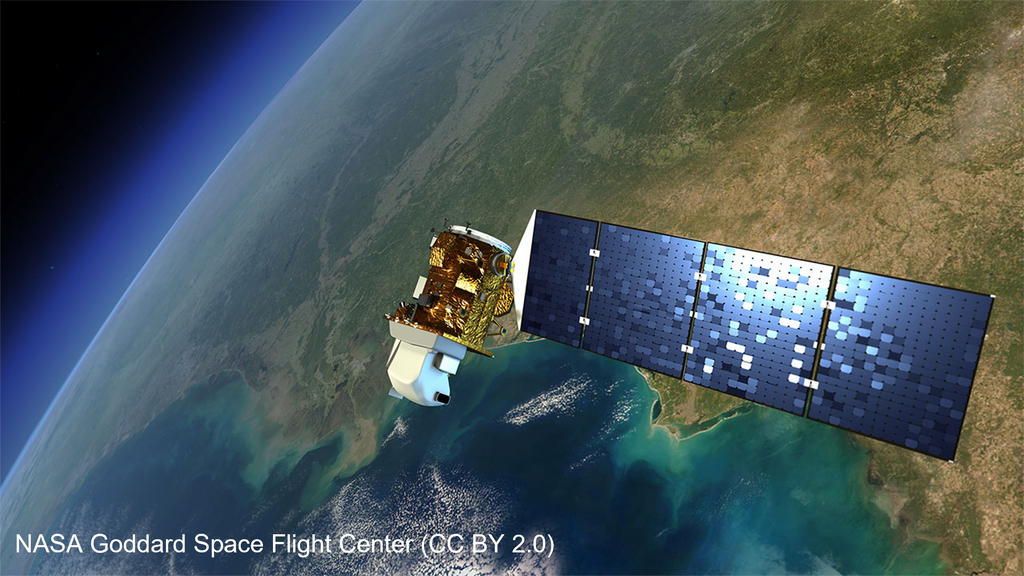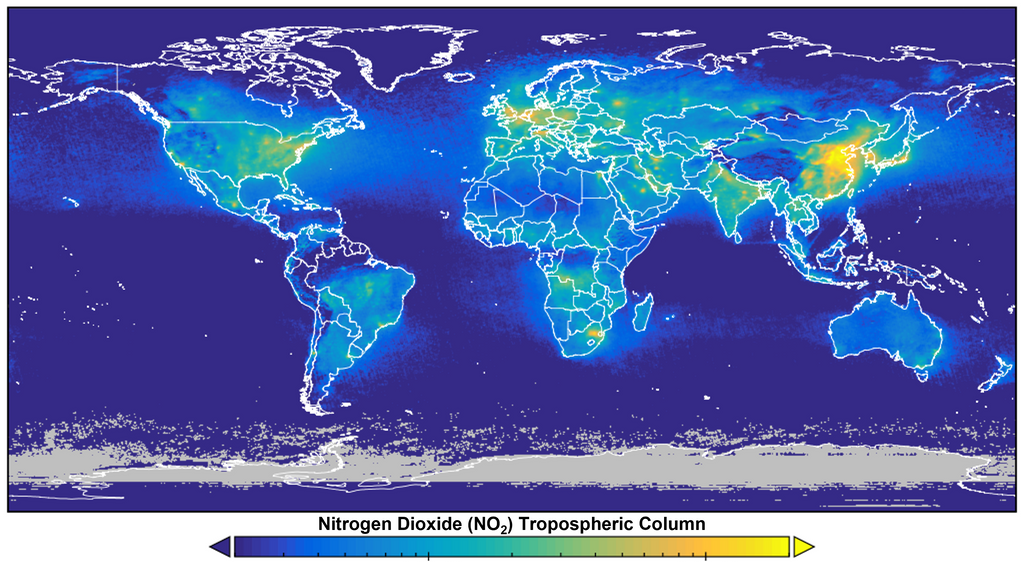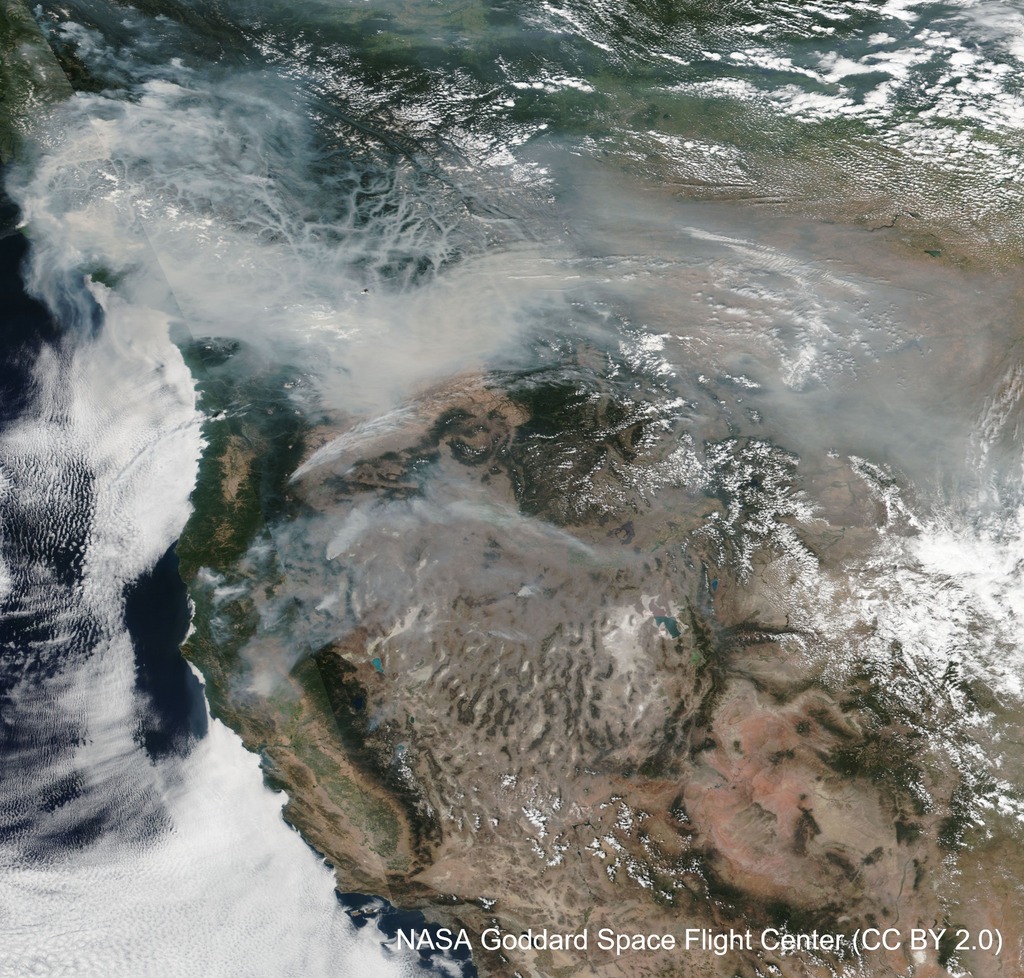Teaching
EE 302 Remote Sensing of the Environment |
EE 540 Atmospheric Chemistry and Global Change |
EE 446/646 Remote Sensing of the Lower Atmosphere |
EE 302: Remote Sensing of the Environment
 This course provides an overall introduction to remote sensing, with a focus on the use of imagery from satellites to study the Earth’s surface. Students will learn how to use measurements made in space to study issues related to environmental science and natural resource management. The synoptic perspective of satellites is ideal for studying the spatial patterns of surface phenomena and for making maps of surface features. One of the most exciting current uses of remote sensing is to monitor environmental change.
This course provides an overall introduction to remote sensing, with a focus on the use of imagery from satellites to study the Earth’s surface. Students will learn how to use measurements made in space to study issues related to environmental science and natural resource management. The synoptic perspective of satellites is ideal for studying the spatial patterns of surface phenomena and for making maps of surface features. One of the most exciting current uses of remote sensing is to monitor environmental change.
The course covers a wide range of related topics, divided primarily into four categories: physical principles, sensors, applications, and methods. In addition to class discussions, students will develop hands-on skills with weekly computer labs devoted to learning how to use image processing software to analyze satellite images.
The course will put a special emphasis on efficient teamwork and effective presentation of scientific results.
EE 540: Atmospheric Chemistry and Global Change
 The quality of the air we breathe is an important environmental issue and a global public health concern. This course introduces the chemical and physical processes that determine the impacts of air quality at local and global scales. By studying the chemistry of stratospheric ozone depletion, ground-level smog, acid rain, and climate change, students will learn how basic chemical principles (e.g. kinetics, thermodynamics, photochemistry, and redox reactions) apply to the understanding of our atmosphere as a chemical system.
The quality of the air we breathe is an important environmental issue and a global public health concern. This course introduces the chemical and physical processes that determine the impacts of air quality at local and global scales. By studying the chemistry of stratospheric ozone depletion, ground-level smog, acid rain, and climate change, students will learn how basic chemical principles (e.g. kinetics, thermodynamics, photochemistry, and redox reactions) apply to the understanding of our atmosphere as a chemical system.
The effects of air pollution on human health and the environment will be explored, and students will learn about methods of air pollution monitoring and control. The course will culminate in discussions about the interactions between air quality, the biosphere, global climate, and sustainability by studying examples from primary literature.
This course introduces Python coding using common atmospheric chemistry data. No previous coding experience is required, and all exercises are performed on the cloud using Google’s “Colaboratory”.
EE 446/646: Remote Sensing of the Atmosphere
 The use of satellite-based remote sensing to study atmospheric properties has revolutionized our understanding of meteorology, air quality, and climate. This course introduces the methods involved in visible, infrared, and microwave remote sensing systems to estimate a variety of atmospheric characteristics, including: vertical temperature and humidity profiles, cloud and aerosol properties, and trace gas abundance.
The use of satellite-based remote sensing to study atmospheric properties has revolutionized our understanding of meteorology, air quality, and climate. This course introduces the methods involved in visible, infrared, and microwave remote sensing systems to estimate a variety of atmospheric characteristics, including: vertical temperature and humidity profiles, cloud and aerosol properties, and trace gas abundance.
Along the way, students will gain a deeper appreciation for major topics in atmospheric science. Emphasis will be placed on the physical understanding of interactions between radiation and the atmosphere, while discussing a range of observations and applications related to climate change, disaster monitoring, and public health. Students will become familiar with a variety of satellite-based atmospheric data sources, and gain hands-on experience with data visualization and interpretation.
This course introduces high performance computing using the BU Shared Computing Cluster. No previous high performance computing experience is required.